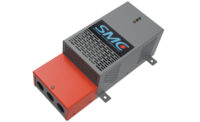Programmable thermostats were first certified by Energy Star in 1995; however, they were removed from the government-backed program in 2009 because, on their own without proper programming, the U.S. Environmental Protection Agency (EPA) disqualified them as energy-saving products.
It seems as if consumers nationwide agree, and statistics back this up.
“Only 12 percent of the nation’s 118 million households had a central air conditioning unit that is actually controlled using a programmed thermostat, and about one in three households using central air conditioning do not have a programmable thermostat,” stated the U.S. Energy Information Administration’s (EIA’s) Residential Energy Consumption Survey (RECS) for 2015. “But, even for those households using central air conditioning that have programmable thermostats, more than two-thirds of those households control temperatures without actually programming the thermostat.”
In 2017, are contractors having success selling programmable thermostats? What are their customers’ thoughts on programmable thermostats? How are contractors making an effort to increase awareness and bolster sales?
NOT QUITE READY
While inception of programmable thermostats has been slow, the number of homes with smart thermostats is growing.
The number of users adopting programmable thermostats is expected to rise from an estimated 1.4 million people in 2013 to 31.9 million people by 2020, according to Navigant Research.
Butch Welsch, owner of Welsch Heating & Cooling, St. Louis, said, there are two major reasons he’s not surprised that programmable thermostats haven’t taken off in popularity.
“The first, and most important [reason], is that air conditioning units are not designed to be programmed to a higher temperature when the home is not occupied,” Welsch said. “Air conditioning units are traditionally sized to operate essentially all of the time. If a thermostat is set up in temperature during the day and then programmed to be lower when the owners arrive home, in hot weather, the a/c unit cannot bring the temperature down to an acceptable level.”
Second, Welsch agrees with the statistic that only 12 percent of the nation’s households have central air conditioners that are controlled by programmable thermostats. Accordingly to him, programmable thermostats have notoriously caused an increase in the number of service calls contractors have had to make.
“The other reason these numbers are probably correct is that if we put in a programmable thermostat that wasn’t specifically requested by the homeowner, we’ve frequently received service calls where the only problem was that the thermostat was 12 hours off on the program,” he said. “I’m sure we’re not the only contractor to receive calls like this. Customers were very unhappy to receive a service charge for such a call, but we incurred the cost. Therefore, for several years, even though the cost of a programmable thermostat was essentially the same, unless the homeowner requested one, we didn’t put one in.”
Travis Smith, owner, Sky Heating & Air Conditioning, Portland, Oregon, feels thermostats work more efficiently on a set-it-and-forget-it mentality rather than a programmable setting.
“I think [this statistic] is perfectly fine,” said Smith. “Air conditioners and heat pumps shouldn’t be designed to recover heat, they should be designed to maintain heating and cooling capabilities. If people set back thermostats on hot weather days, the a/c will not keep up. Also, with variable capacity systems (VCS), they actually operate more efficiently with a set-it-and-forget-it mentality than a programmable mentality. I keep both of my houses on auto changeover with a three-degree deadband and no setbacks at all, but both of my homes have variable capacity inverter-driven equipment.”
Families are becoming busier. According to a news release by the U.S. Department of Labor (DOL), “Among married-couple families, both the husband and wife were employed in 48.0 percent of families in 2016. Also, 34.2 million families included children under age 18, about two-fifths of all families in 2016.”
Two-income households are the new normal, after school activities and child care are a must, and hardly anyone works a 9 a.m. to 5 p.m. schedule. Some family members arrive home after school while others don’t make it in until well into the evening. As a result, families don’t tend to be on the same exact time schedule any longer. Some contractors argue this is why programmable thermostats aren’t attractive to the average busy household.
“It seems to be increasingly rare for a full family to have a set schedule out of the house in today’s hectic world,” said Chad Baumann, sales and marketing manager, Baumann & DeGroot Heating and Cooling, Holland, Michigan. “Trying to create a schedule even for my family is nearly impossible.”
Furthermore, contractors see that while a customer may purchase a programmable thermostat, they don’t necessarily ever utilize the setback feature anyway.
One contractor admitted that even he is guilty of this.
“I would agree with the statistic,” said John Aliano, owner of Aksarben American Residential Services (ARS) of Omaha, Nebraska. “I have two at my house and do not use the setback feature.”
While contractors continue to push these products, customers remain mostly unreceptive to the idea.
“We only sell programmable thermostats, but, again, the majority do not want to use the program feature,” said Derek Cole, general manager, One Hour Heating & Air Conditioning, Laurinburg, North Carolina.
While many continue to struggle selling programmable thermostats, the tables may be turning for the future of these devices.
POSITIVES WITH PROGRAMMING
According to the 2016 Energy Pulse Survey, commissioned by the Shelton Group, there are three main reasons people are investing in energy-efficient products.
“Households also have multiple reasons for making efficiency investments,” stated the study. “When asked to rank the top three reasons to ‘participate in energy conservation activities or buy an energy-efficient product/make home improvements,’ saving money was most important (61 percent), followed by comfort (35 percent), and health (27 percent).”
Therefore, it is not so surprising that contractors have seen programmable thermostats pique the interests of energy-efficient consumers. This was especially true when programmable thermostats first hit the market, and it continues to be a factor today.
“Many people who switched to programmable thermostats years ago in order to save energy or received one with a new installation, got them at a time when it was still fairly difficult for the layperson to understand the programming,” said Rich Morgan, president and CEO, Magic Touch Mechanical, Mesa, Arizona. “I equate programming an older generation thermostat to using a T9 to send text messages on our old flip phones, whereas the new models are the equivalent to the smartphone.”
According to Chris Kitchin, comfort advisor, One Hour Heating & Air Conditioning, Virginia Beach, Virginia, the ongoing process of making technology easier to use has been a benefit to their selling programmable thermostats.
“When they were first available, programmable thermostats were difficult to use and were a deterrent,” he said. “Now, with new technology and Wi-Fi capability, programming is very user-friendly.”
Similarly, American Residential Services (ARS), a Memphis, Tennessee-based provider of air conditioning, heating, and plumbing services, sees the ease of technology increasing interest in programmable thermostats.
“Despite the aforementioned trend [on programmable thermostats], ARS/Rescue Rooter sees technology becoming more invaluable to homeowners in the near future,” said Christopher Mellon, senior vice president and chief marketing officer, ARS/Rescue Rooter. “Programmable thermostats lead to the evolution of the smart thermostat, which is even more intuitive. As the smart home industry shifts into the mainstream, they will have to cater to the ‘do it for me’ customers as opposed to the current ‘do it yourself’ techie.”
In addition, the younger demographic seems to be the future customers of programmable thermostats.
“As more of the younger generation become homeowners, the number of them actually using the programmable thermostats will increase because that generation is used to dealing with electronics and digital items,” said Welsch.
So, how are contractors working to increase awareness and bolster the amount of households that have a central air conditioning unit that is actually controlled using the programmed thermostat?
“We continue to educate our customers through our blog and interactions with our knowledgeable technicians who are in homes every single day,” said Kitchin. “Through ongoing training, we are able to stay ahead of the curve and provide our customers with top-notch service. We continue to [create awareness and improve the statistic] by conducting more studies about energy savings and additional benefits and provide thorough instructions on how to properly set a programmable thermostat,” he added.
If technicians are trained properly on selling programmable thermostats, they can better communicate the features and how to use them when working with the homeowner. This helps create more awareness of the benefits and promotes proper use of the products.
“We bring [programmable thermostats] up to the customer when we are in the house and notice that they are not using the setback feature,” said Aliano. “It can be a touchy subject. Some customers do not like to admit that they do not know how to program the thermostat. Some feel guilty that they are not trying to save energy and are not doing their part in deducing energy consummation. When we are in the home and see they aren’t using the setback feature, we reeducate them on how to program the thermostat and the benefits of using the setback feature.”
Cole agrees, stating that One Hour Heating & Air Conditioning increases awareness of programmable thermostats by encouraging technicians to educate customers on the benefits during a home visit.
“Better customer education at each visit and discussing the importance of temperature control is how we increase awareness,” said Cole.
Publication date: 10/23/201
Want more HVAC industry news and information? Join The NEWS on Facebook, Twitter, and LinkedIn today!








